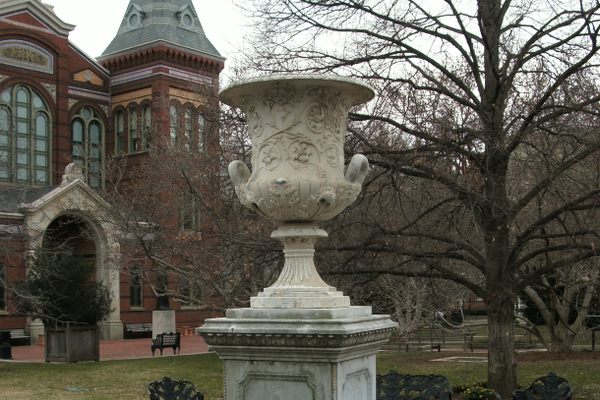NASA Full Scale Wind Tunnel Propeller
While most wind tunnels test scale models, the "Cave of Winds" was large enough for actual airplanes.
From 1931 to 2009 nearly every Air Force fighter plane spent some time undergoing tests at the Full-Scale Wind Tunnel in Hampton, Virginia. While most wind tunnels test scale models, a NASA history of this unique facility glowingly recalls that its tremendous size allowed for the use of “actual airplanes at operational flight speeds.”
The crown jewel of the facility was the pair of 35-foot wooden propellers, 10 feet larger than those on the Titanic, and capable of generating 120 mph hurricane force winds. Their electricity demands were so great that NASA had to build an onsite power plant to prevent area outages.
The fans connected to an “elliptic throat” that sloped inward like a funnel and directed a blast of air into the test area. Once the wind passed over an airplane, two tunnels on opposite sides carried it back around in an infinite loop.
The Full Scale Wind Tunnel helped aeronautical engineers tweak their designs for maximum performance. The Air and Space Museum Aeronautics curator, John Anderson, described how some of the “drag cleanup tests” were conducted:
“For these tests, a given airplane in its full operational configuration would be systematically stripped one-by-one of its external appendages, and rough contours smoothed over with putty, until just the smooth basic shape remained. The aerodynamic drag was measured at each stage, identifying the drag due to each item. In this fashion, those items causing the most drag were identified and modified so as to lower the overall drag of the airplane.”
Testing of this sort helped deliver breakthroughs like retractable landing gear and variable sweep wings.
In addition to testing full scale aircraft models, NASA frequently opened its “Cave of Winds” up to other government customers. Scale models of a nuclear submarine, the Mercury spacecraft, and even a airship hanger building underwent optimization at the Full Scale Wind Tunnel.
Beginning in the 1980s, NASA came under pressure from federal budget makers to reduce spending. It was operated by Old Dominion University for a while beginning in 1995. The cost of restoring it to safe operations and the existence of other large NASA subsonic wind tunnels led to the decision to close the facility. NASA at one point explored converting the wind tunnel into a museum, but post-9/11 security requirements and its location on the Langley Air Force Base made that impossible. The Full Scale Wind Tunnel was demolished in May 2011. Today the site is a surface parking lot.
Know Before You Go
The Full Scale Wind Tunnel was demolished in 2011. One of the 35-foot wooden propellers is on display at the National Air and Space Museum in Washington, D.C.



















Follow us on Twitter to get the latest on the world's hidden wonders.
Like us on Facebook to get the latest on the world's hidden wonders.
Follow us on Twitter Like us on Facebook